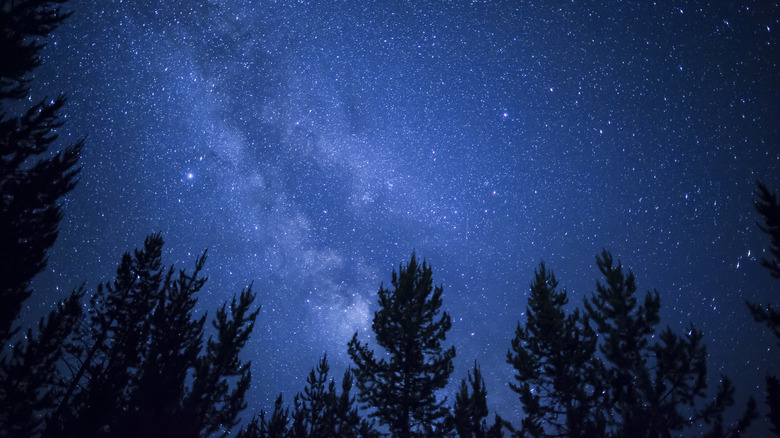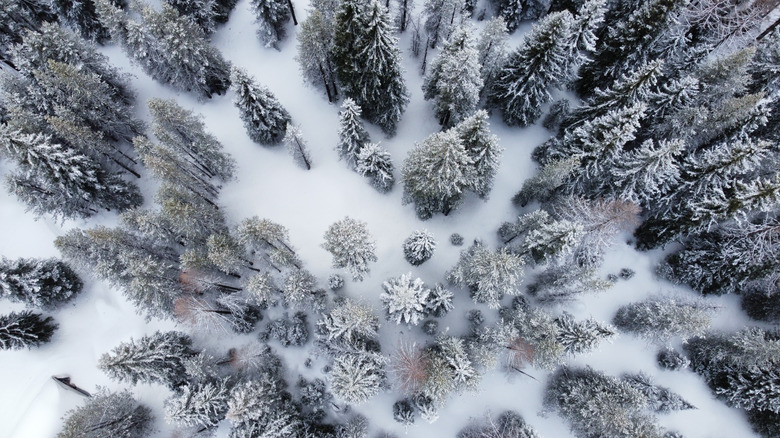Oregon's Massive National Forest Is An Alpine Playground With Lakes, Canyons, And Elk-Filled Meadows
The Pacific Northwest offers adventure-starved travelers a wealth of outdoor adventure. The Oregon Islands National Wildlife Refuge delivers a coastal refuge and over a thousand islands. Washington's Cascade Loop, meanwhile, showcases the northwest's prettiest mountains, lakes, and island views. And still, Oregon's Umatilla National Forest offers yet another side of the northwest's personality. This alpine playground, about 235 miles inland from the state's capital, Salem, mixes lakes, canyons, and meadows to create a diverse collection of the region's greatest natural hits.
The massive 1.4 million-acre plot of land oscillates from steep valleys interspersed among higher ridges and plateaus. The hillsides, draped in thick forests and grasslands, are interrupted by imposing outcrops that reach up to 8,000 feet above sea level. This odd mix — wilderness below, barren terrain above — reverses the alpine norm. The resulting fluctuating landscape, with 190,000 acres of old-growth forest, creates the ideal escape for lovers of rambling alpine terrains. Lacking a singular identity, the Umatilla National Forest presents a long list of possibilities, from hiking to fishing, wildlife encounters, and even winter adventures like snowshoeing. It all makes the inconvenient trek to the part of the Blue Mountains that straddles the eastern borders of Oregon and Washington worthwhile.
Umatilla's serene and diverse geography
Any visit to Umatilla National Forest must include a mix of high and low, with something in between. For the "high" portion of a visit, the forest's unique topography creates a series of canyon-top viewpoints to witness some stunning panoramas. The Stahl Canyon Overlook exemplifies the mix; raptors stream across the sky while wildlife peruses the valleys below.
Dropping down into the "low" portion of a trip leads one to the forest's most vibrant scenery within the crevices and valleys between the canyons. There, one can find the largest Rocky Mountain elk population of any national forest, two varieties of grouse, two species of bighorn sheep, moose, wild turkey, deer, and a whole smattering of animals that make the area a favorite among hunters and naturalists.
The "something in between" can be found in the forest's collection of aquatic locales. Lakes, streams, and rivers crisscross the terrain, presenting opportunities to swim, kayak, fish, or boat. The problem won't be so much where to go, but choosing what to leave out. Jubilee Lake, which hosts the forest's most popular campground, provides the perfect shelter on sultry days. The lake's spruce fir perimeter and high elevation keep temperatures reasonable, while still offering a good spot to take a dip or reel in some fish.
How to get to Umatilla National Forest and where to stay
If you're not a local lucky enough to live near the national forest, an arduous (but rewarding) journey awaits. Portland International Airport, the closest major transit hub, is about a four-hour drive away. Should the logistical stars align for you, book a trip to the smaller Tri-Cities Airport, which puts you within spitting distance of the forest.
Looking for accommodations on over a million acres of land is a tall order. Umatilla National Forest has nearly 40 campgrounds and over a dozen cabins available for visitors to rent. Some options do stand out, however. If logistics allow, hightail it to the Bull Prairie Campground, which sits right alongside its namesake lake. Its 30 campsites include essentials like potable water and little else, giving you a chance to truly meet nature on its own terms. Of course, that means you'll need to prepare ahead of time and pack the best camping gear for a comfortable night outdoors.
If you're looking for more comfortable digs or need shelter during the winter, stop by Clearwater Big House. It was built by a ranger in 1928 and hasn't been updated much since, and like most cabins in the national forest, that means there's an outhouse and no electricity. It offers easy access to ideal snowmobile and cross-country skiing terrain — and you'll need one of the two to reach the house in the winter.


